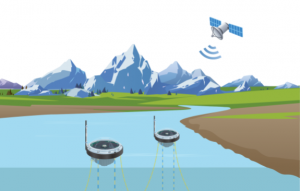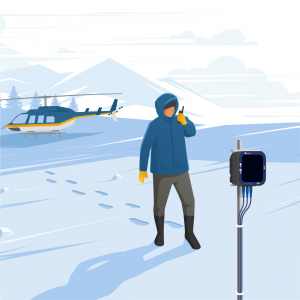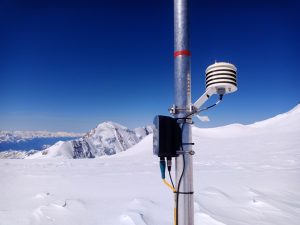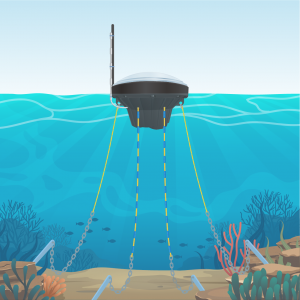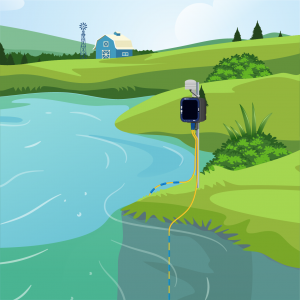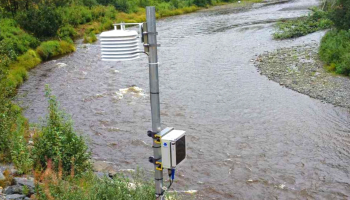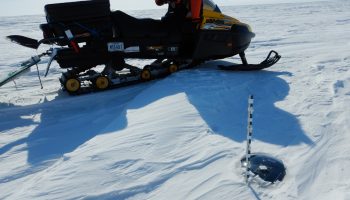Environment
Applications for Environment industry.
Environment
The global natural environment is being significantly impacted by climate change. The northern regions are experiencing accelerated warming compared to the rest of the world, exerting profound effects on plants, animals, and human communities. Monitoring temperatures is crucial for researchers to comprehend the consequences for species in diverse environments, offering vital data to contribute to environmental monitoring.
Waterways (Rivers, Streams)
Temperature monitoring in streams and rivers is vital for understanding the dynamic nature of these ecosystems. By strategically placing temperature sensors at various locations within the water column, valuable insights can be gained regarding habitat suitability and ecosystem health. Temperature fluctuations directly impact the habitat suitability for various fish species, influencing their survival, reproduction, and distribution. Cold-water species, such as trout, require cooler temperatures, while warm-water species, like bass, thrive in warmer waters. Monitoring temperature variations helps assess the suitability of these habitats for different fish species and informs conservation efforts. Additionally, temperature profiles aid in understanding flow dynamics and thermal stratification within streams and rivers. Variations in temperature across different depths can indicate the presence of thermal layers, influencing the distribution of aquatic organisms and nutrient cycling. Continuous temperature monitoring provides essential data for adaptive management strategies to mitigate the effects of climate change and preserve the balance of these ecosystems.
Permafrost and Tundra Research
In the context of a warming climate, particularly pronounced in northern regions where temperatures are rising at an accelerated rate compared to the global average, understanding the impacts on permafrost is paramount for scientists. Permafrost thaw not only affects local communities, infrastructure, and natural habitats but also leads to the release of greenhouse gases (GHGs) from decomposing organic matter that had been locked in frozen for thousands of years. This thawing sets off a positive feedback loop, contributing to increased GHGs in the atmosphere, further warming the climate, and perpetuating more permafrost thawing in an ongoing cycle.
To comprehensively grasp the implications of permafrost thaw and its cascading effects, it’s essential to understand the temperature profile of the permafrost and monitor changes over time. This understanding not only sheds light on current conditions but also aids in forecasting future scenarios. Temperature cables or probes are strategically installed within drill holes in the permafrost, traversing through the active layer into the frozen ground below. These installations can vary in depth from a few feet or meters to several hundreds, tailored to the specific requirements of the study. Such detailed monitoring endeavors offer invaluable insights into the dynamics of permafrost and its response to ongoing climate changes, enabling scientists to better anticipate and mitigate its impacts.
Cryosphere/Glacier
Understanding the frozen water on Earth is integral to grasping the potential impacts of climate change, much like monitoring permafrost. The same warming trends affecting permafrost are rapidly melting glaciers at the northern and southern poles, as well as sea ice and alpine glaciers worldwide. This extensive melt contributes to rising sea levels, posing significant threats to low-lying communities and ecosystems globally.
Moreover, the warming trends have notable implications for winter transportation in northern regions, particularly between remote communities and traditional indigenous lands. As the climate warms, the window for safe travel over frozen rivers and lands is shrinking, impacting indigenous traditional ways of life.
Temperature profiling plays a crucial role in understanding the rate at which the cryosphere is warming relative to air temperature data. By installing temperature cables or probes at various depths, researchers can analyze the impacts of air temperature fluctuations throughout the year and forecast future trends. Such insights are essential for anticipating and mitigating the impacts of climate change on frozen water bodies and the communities and ecosystems reliant upon them.
Avalanche Forecasting
Understanding avalanche dynamics is essential for mitigating risks associated with these natural hazards. Temperature sensors play a crucial role in monitoring the buildup of the snowpack in avalanche-prone areas, offering valuable insights for avalanche forecasting activities. Prior to snowfall, a series of closely spaced sensors are suspended from a post extending beyond the anticipated height of the snowpack. As snow accumulates and covers each sensor, the collected data aids in comprehending local conditions.
The information gleaned from monitoring the snowpack temperature profile includes near-surface snow gradients, mid and full-pack snow gradients, seasonal changes during springtime, fluctuations in soil temperature, snow depth measurements, gradients of near-surface air temperature, sky cover conditions, settlement rates, and surface snow conditions. This comprehensive data set enhances the accuracy of avalanche forecasting models, enabling forecasters to assess the risk of avalanche occurrence and issue timely warnings to protect lives and property in vulnerable areas.
Aquatic Systems (Lakes, Oceans)
Temperature monitoring in lakes and oceans is essential for understanding the complex dynamics of these vast water bodies. Seasonal variations in temperature and thermal stratification impact nutrient cycling, oxygen levels, and the distribution of marine life. For example, thermal stratification in lakes affects the vertical distribution of oxygen and nutrients, influencing overall ecosystem health. Additionally, temperature directly affects the distribution, behavior, and reproduction of marine organisms. Coral reefs, highly sensitive to temperature changes, are threatened by coral bleaching events induced by elevated sea surface temperatures. Monitoring sea surface temperatures aids in predicting and responding to such events, contributing to the conservation of fragile marine ecosystems. Furthermore, temperature monitoring provides critical data for understanding oceanic currents and their role in regulating global climate patterns. Rising ocean temperatures contribute to the melting of polar ice caps, sea level rise, and changes in weather patterns worldwide. Continuous monitoring helps scientists track these changes and assess their impact on marine biodiversity and coastal communities, guiding conservation and management efforts in lakes and oceans.
Related Case Studies
Do you have any questions or are you
interested in a quote?



